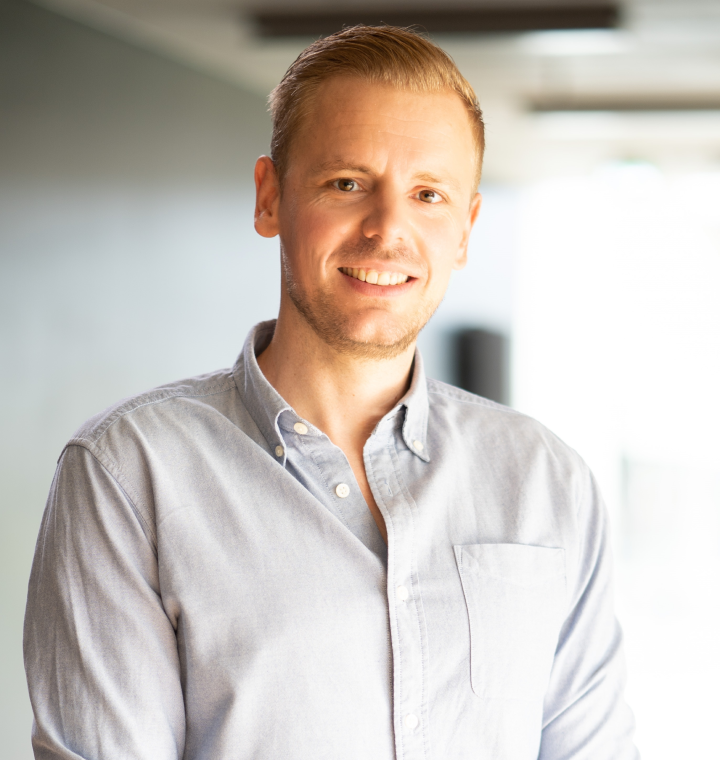
How Does Customer Success Data Improve Affiliate Marketing?
Discover how customer success data enhances affiliate marketing by identifying high-value customers, personalizing campaigns, and increasing ROI. Learn best pra...

Learn how to leverage customer success data to enhance your affiliate campaigns. Discover key metrics, segmentation strategies, and automation tips to drive SaaS growth and turn loyal customers into your best marketers.
Creating an affiliate campaign can be a powerful marketing strategy to accelerate the growth of a SaaS business. However, many companies don’t implement it right, which is why they find very little success.
Instead of treating this as just another marketing tactic, you can look at it as an extension of your overall Customer Success strategy.
What does Customer Success have to do with Affiliate Marketing? Think about it this way: your best customers also become your best marketers. When they’re happy with your product, they want to recommend you to everyone they know.
And since brand loyalty is a direct result of Customer Success, it makes the perfect start for your Affiliate Marketing Program. It only takes a bit of work to turn your loyal customers into affiliate marketers. Here’s how to create a Customer Success Affiliate Campaign :
The first thing you need to do is to identify your most successful customers. These are the customers who get the most value out of your product, so they’re more inclined to recommend you to their peers or other industry professionals.
Customer Success Managers can easily identify who these customers are by looking at each account’s Health Score – the higher the score, the higher the chances of success. However, looking at the Customer Health Score only gives us an overview of your relationship with that customer.
Here are more metrics you should consider when selecting your most successful customers:
Other significant sources of Customer Success data you can use are:
Last but not least, you should look at your CRM data and identify who the stakeholders and the influencers are in the sales process. These are the people who you’ll want to engage through your affiliate campaign because they are the ones who make the sale/conversion happen.
For best results, you can match your top customers with the channels they’re coming from, like Carsten Schaefer from Trust does:
“Our customer data is crucial for our affiliate campaign. The most important part is the acquisition channel because we need to know where our top customers are coming from. For example, right now, it’s from organic search, so we try our best to provide better content for ouraffiliate marketers . Basically, the success of your Affiliate Marketing campaigns depends on many factors, but primarily it’s the materials you give to your affiliate partners. In our case, we publish high-quality content that our affiliate partners can use to promote us, and it works really well.”
Providing top-quality content that partners can use is another affiliate effort that’s supported by Customer Success data. For example, we try to create guides and articles on the topics our customers are most interested in.
Make sure you also analyze the quality of your affiliates. For one-off purchases, this might not be important. But since SaaS businesses operate on subscriptions, the quality of the referees is crucial (here’s where analyzing Lifetime Value and Customer Retention Cost help):
“We use customer data to make sure we’re getting an ROI on our affiliate program. On a surface level, affiliate programs seem like a no-brainer because you pay for performance. In other words, you only pay a commission if your affiliate partner drives a sale. However, this isn’t always the case for software companies since they operate on a subscription model rather than a one-off purchase. Not every affiliate partner is worth investing in. For example, if they send low-quality leads that quickly churn, then it may not be profitable. We track customer data such as monthly churn rate and lifetime value (LTV). This information lets us know which partners are sending qualified prospects who are a good fit for our product. It also ensures we structure our affiliate commissions so that we strike the right balance between offering an appealing incentive while making sure our program generates an ROI” – Ian Kerins, Marketing Director of Scraper API.
Now that you know which Customer Success metrics to track to identify your top customers who are most likely to promote your product, it’s time to make sense of all the data you gather.
As Carsten mentions, identifying where your most successful customers come from, as well as what makes them successful, will give you a direction for the assets you’ll need to prepare for your affiliate campaign.
In Trust’s case, because most of their successful customers come from organic search, the next thing to do would be to identify the pain points that attract those customers to their website and use them as USPs in their affiliate marketing campaign .
For example, one of the main pain points we’ve heard about during onboarding is customer churn – so we spent months creating an exhaustive guide to churn. Such a guide is now suitable for both internal discussions with customers and many of our marketing efforts, including affiliate campaigns.
Next should be identifying which set of actions makes these customers successful and ensuring that all the new customers who come through referrals follow the same exact steps (and hence achieve the status of a successful customer).
Ideally, you should segment the customers that come to your website through referrals according to their niche or the affiliate who sent them. The more a landing page connects with the user, the more likely it is to convert.
Personalization goes beyond getting content in front of the customer – it’s about leveraging the insights you’ve extracted from your current customer base and creating a highly relevant experience for your leads.
From the previous step, you now know their pain points and can customize landing pages according to that or any other relevant Customer Success data.
As each customer and industry are unique, so are their pain points and challenges, and, therefore, they’ll use your product in different ways. Identifying the most common use cases will help you create more relevant assets your affiliates can use to promote your product (you can also highlight these use cases in your landing pages).
If they agree, you can create case studies together with your most successful customers where you highlight the results they’ve achieved by using your product.
Even better, if you manage to turn these customers into affiliates, they’ll be more engaged in promoting your product because they’ll showcase their own experience with your product. (of course, you can link these case studies in your landing pages too).
Use Automation
The process of gathering data and using it is not scalable if it’s done manually, so this is where Customer Success tools can help.
At this point, your Customer Success strategy and Affiliate Marketing program are closely intertwined. As you would with any new customers, you can set up a specific customer journey (using an email drip campaign ) for the customers you get through referrals.
Using data science to enrich your Customer Success efforts is an evolving trend. Marketers know automation is a strength. It’s time for customer-facing teams (support, service, success, account) to integrate automation based on data science to constantly update materials and landing pages, create predictive models of churn, and drive more affiliate leads .
Now, I’m aware that gathering and making use of all this data in your affiliate marketing campaign takes a lot of time and effort, so the benefits must be worth it to justify this.
I think they are! Here’s what you gain by using Customer Success data in your affiliate marketing campaigns:
Using data to drive decisions is, by no means, a new concept. Still, there are very few SaaS businesses out there who use their Customer Success data specifically when designing their Affiliate Marketing Program , which can give you a significant head start for your future affiliate efforts.
I hope this article has shed some light on why this strategy is relevant and how you can implement it. Are you ready to give it a try?
Key customer success data includes Health Score, upsell and cross-sell history, Lifetime Value (LTV), Customer Retention Cost (CRC), Net Promoter Score (NPS), Customer Satisfaction Score, product usage, and CRM data on stakeholders and influencers.
It enables you to identify your most successful customers, understand their pain points, personalize landing pages, highlight relevant use cases, and ensure affiliates are bringing in high-value, low-churn customers, ultimately increasing ROI.
Using customer success data grounds your campaign in reality, helps you identify pain points, segment and personalize for better results, and leverages your customers’ success stories to attract new ones.
Automation tools can streamline data collection, segmentation, and campaign personalization, making it easier to scale your affiliate program and keep materials up to date based on real-time customer insights.
Yes, by analyzing metrics like churn rate and LTV, you can identify which affiliates bring in high-quality leads and optimize your partnerships for long-term value rather than just short-term conversions.
As the CEO of Custify, Philipp Wolf helps SaaS businesses deliver great results for customers. After seeing companies spend big money with no systematic approach to customer success, Philipp knew something had to change. He founded Custify to provide a tool that lets agents spend time with clients—instead of organizing CRM data.
Discover how Post Affiliate Pro's tools and insights can help you harness customer success data to create high-performing affiliate campaigns and drive SaaS growth.
Discover how customer success data enhances affiliate marketing by identifying high-value customers, personalizing campaigns, and increasing ROI. Learn best pra...
Affiliate marketing is one of the best ways to reach new audiences with your products or services. Here are a few of the most common challenges.
Boost your online sales by implementing an eCommerce affiliate marketing program designed to help you grow while others sell for you.
Cookie Consent
We use cookies to enhance your browsing experience and analyze our traffic. See our privacy policy.






